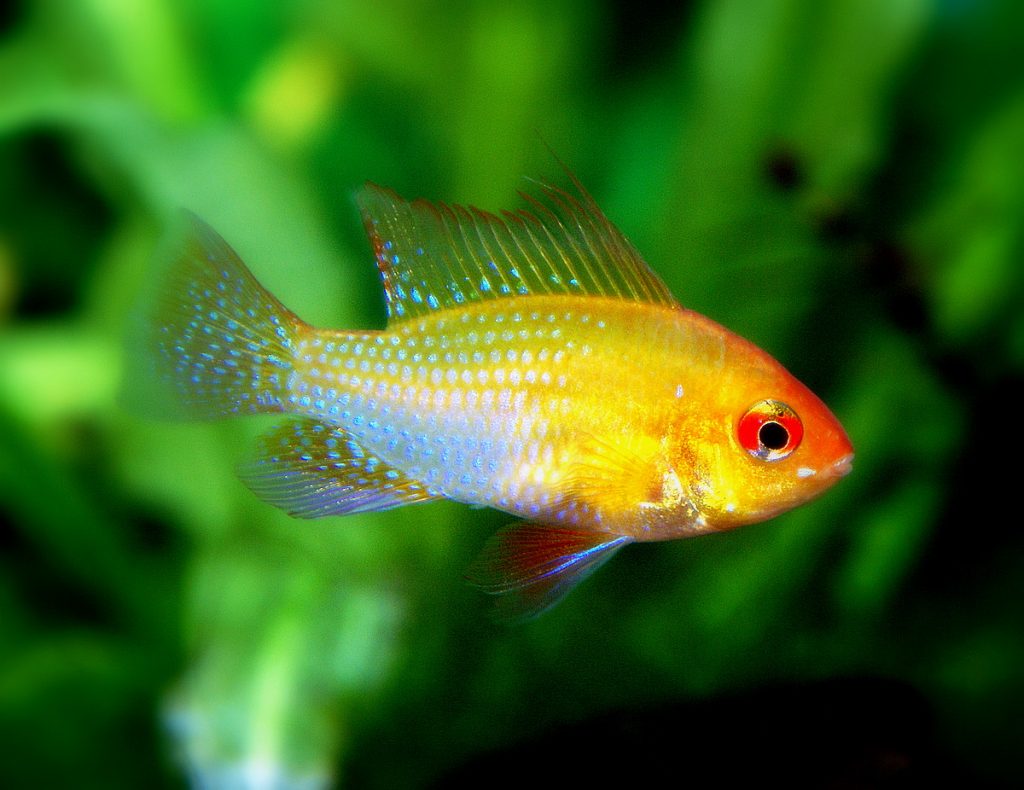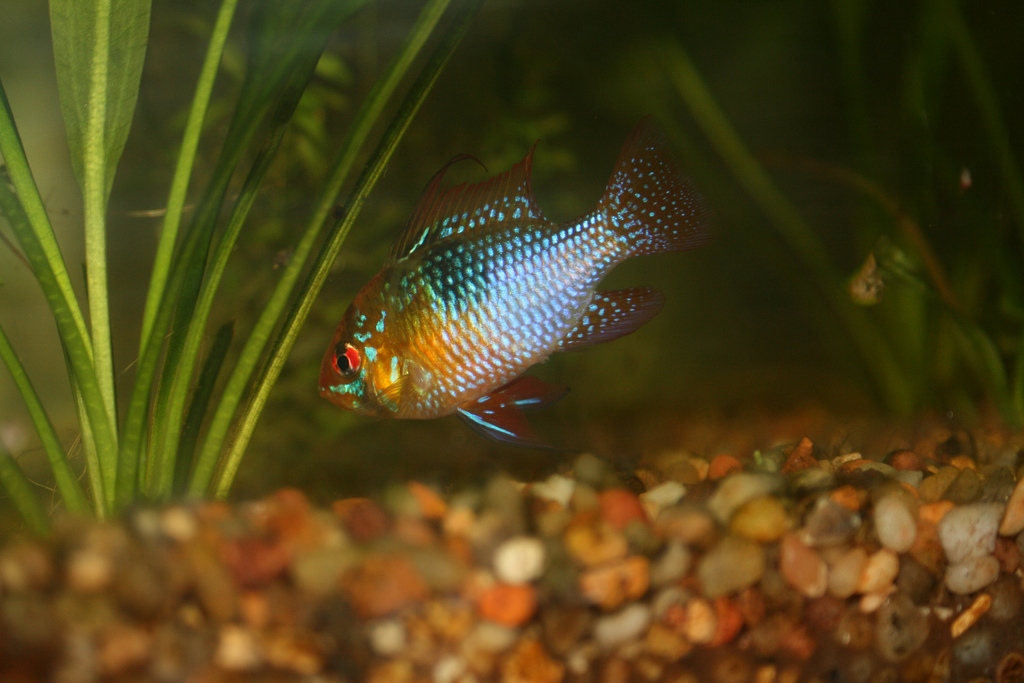Ram Cichlids are a group of tropical freshwater fish native to South America. They are immensely popular in the aquarium hobby, where keepers have developed many varieties, such as the German blue ram, butterfly ram, yellow ram, and the stunning electric blue ram. The care requirements for these different forms is largely identical to the “normal” ram cichlid, however they tend to be less healthy and fertile in general.

Aquarium conditions
Ram cichlids are peaceful fish and can be kept in a community aquarium with other similarly sized fish. They generally do best as a single breeding pair.
A 20 gallon/75 litre planted aquarium is ideal. The tank should have dense clumps of plants, caves, and open swimming areas. If breeding is desired, a smooth rock should be provided on which they can attach their eggs.
Ram cichlids demand extremely high water quality, so frequent water changes are a must. The temperature should be within a few degrees of 80f/26c. They prefer slightly acidic water with a pH between 5 and 7.
Diet and feeding
Ram cichlids are omnivorous and should be provided with a mix of different fish foods. High quality flakes, small or crushed cichid pellets, frozen meaty foods, and live foods such as brine shrimp and bloodworms. Ram cichlids prefer several smaller feed during the day rather than one or two large feeds.

Breeding and reproduction
Ram cichlids can be challenging to breed. Captive-raised stock, particularly those that have been selectively bred for particular aesthetic traits, tend to have quite poor fertility and lackluster parental instincts.
When conditions are ideal, the female will lay her eggs—as many as 300—and affix them to a flat stone, where they are immediately fertilized by the male. The fry will hatch after just three or four days and begin to swarm around their parents in a large cloud-like mass. They are incredibly small, so steps should be taken to ensure they don’t get sucked into the filter.
Brine shrimp and commercial fry food should be provided a couple of times a day. Once the fry are about three weeks old, they should be moved to a separate grow-out tank where they’ll need several months before they’re large enough to survive with other fish.
Closing thoughts
Ram cichlids are a little more delicate than most of the other commonly available community fish, but their unique personality and stunning colors make them worth the effort.
